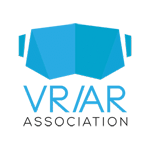
What if a computer could actually see the world? Project Tango makes it possible
Google (or Alphabet Inc, if you mind the details) is always innovating — whether it’s in Internet search, smartphones, driverless car technology, or any of the myriad areas in which the company is currently burning through R&D cash. One recent breakthrough is Project Tango, which had been available to developers for about a year, but only recently started generating buzz after it was announced that Lenovo would be releasing the first smartphone to come with Tango baked in.
What is Google’s Project Tango?
“Tango lets you see more of your world. Just hold up your phone, and watch as virtual objects and information appear on top of your surroundings. So no matter where you are, there’s always a richer, deeper experience to engage with, explore and enjoy. You’ll see.” —From Google’s Project Tango page
While Google’s flowery description makes Project Tango sound interesting, it also doesn’t really explain what it is or how it works. So allow me: Project Tango is a new software platform that utilizes an array of cameras and sensors to make a mobile device spatially aware of its location.
A Tango-equipped smartphone or tablet will read the physical contours and dimensions of the space it’s in, and allow for all manner of digital manipulation of the scene — including highly accurate indoor maps, 3D manipulation (i.e., adding 3D objects that aren’t there, or painting over real, physical items occupying the space), taking precise measurements of the room and the items in it, etc. Developers are currently working on creating apps for the platform, and there will soon be hundreds of other uses no one has even thought of yet.
A Tango-equipped smartphone, like the forthcoming Lenovo Phab 2 Pro, will be able to “see” the room that it’s in, noting the placement of furniture, wall art, other people, and stray items lying around. This contextual awareness opens the door to all kinds of new applications, though much of the early excitement around Tango has been focused on the consumer side of things. The platform appears to be another fun toy — early demos show off games that blend the real world with the virtual — but beyond turning your phone into a game machine, personal GPS or digital tape measure, what’s the value to business?
Should businesses be thinking about Google Tango now?
Though it’s early in Tango’s development, there are already reasons for businesses to start looking at the platform as a way to help cut costs and increase sales, all while building brand loyalty through an unforgettable, future-forward shopping experience.
Here are 3 of the biggest upgrades Tango is bringing to businesses:
1. The “endless aisle”
The big promise of Augmented Reality and Virtual Reality for retailers is that the technology can cut costs while also enabling sales. Project Tango looks to upgrade the current AR/VR experience by making it a seamless, intuitive and organic part of the buying experience.
The “endless aisle” is loosely defined as the addition of a kiosk to a retail space that allows customers to browse from and purchase a much wider range of products than the business physically has in stock. The customer selects what they want and pays for it, and the item is automatically shipped to their home. Now that they’ve proven their usefulness in a showroom setting, endless aisle kiosks are in the early stages of making the jump to non-traditional locations such as airports, shopping malls, sports stadiums and movie theaters. This approach engages new audiences with large scale or configurable and semi-custom products that have traditionally required huge showrooms and plenty of warehouse space. Tango’s built-in technology will make these kiosks an even more compelling shopping experience for consumers.
2. B2B Sales calls with more bang, less bucks
Business-to-business (B2B) selling stands to benefit greatly from Tango. Businesses that sell large consumer goods — manufacturing equipment, furniture, appliances, cars, etc. — will have an immediate use for the technology: virtual product demos. The opportunity here is huge, as a sales team wielding Tango-equipped devices can offer on-location virtual product demos without the need to lug around expensive and/or unwieldy samples and equipment – or even image targets.
This type of AR demo had been previously achieved by printing out a paper “marker,” which AR software would see and convert into a digital image — a new outdoor deck, for example. Tango eliminates the need for the paper marker, making product demos even easier and creating 3D images that integrate even more seamlessly with the real world around them.
3. A useful, memorable customer experience
In the past, a knowledgable salesperson was often enough to ensure positive customer feedback, but upgrading the buying experience has become the new frontier in digital-enabled sales. Let’s face it, no matter how good your company is at what it does, there are usually at least a few competitors doing excellent work as well. That increased competition is one reason that customer experience has become retail’s latest competitive battlefield. In this environment, a positive or memorable experience builds brand loyalty (and garners positive social media mentions), which can translate into the customer spending more money on a range of products over a longer period of time.
Tango has the potential to streamline and improve the sales process. For retailers, a Tango-equipped device promises to be more intuitive, more organic, more responsive and overall easier to use compared to traditional Augmented Reality. Tango also can help migrate the in-store experience to in-home shopping. For instance, it will allow customers to demo or view a product discovered in a retail environment within the walls of their own home.
Businesses should start to Tango now
When it comes to Tango, you don’t want to be the last one on the dance floor. The cost savings made possible by the Endless Aisle alone make this a must-investigate technology. Add in Tango’s ability to streamline the sales process and eliminate costly samples and product demos, and the fact that the platform provides a new, useful and memorable customer experience, and it becomes clear that any business that ignores this emerging technology risks getting left behind as retail and B2B step further and further into our digital future.











